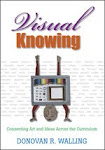From time to time education philosophy cycles from the instrumental to the holistic and back again, particularly in terms of public policy. To be clear at the outset, I believe the holistic is of greater value, and I suspect that most educators also believe this.
Some years ago I approached John Goodlad about bringing out a second edition of his 1979 book, What Schools Are For, because the essential discussion is so sound. He consented, and I acquired his old mentor Ralph Tyler’s last piece of writing (before his death at age 92) to serve as a foreword. In this book Goodlad hearkens to the precepts articulated by John Dewey and others early in the twentieth century, namely, that the central purpose of education is individual self-realization. Along this journey there are, of course, instrumental purposes, such as learning to read, to compute, and to work with others.
Dewey averred that “the criterion of the value of school education is the extent to which it creates a desire for continued growth and supplies the means for making the desire effective in fact.” Almost sixty years later, Lawrence Cremin paraphrased Dewey, saying that “the aim of education is not merely to make citizens, or workers, or fathers, or mothers, but ultimately to make human beings who will live life to the fullest.”
Whenever education is narrowly prescribed, it loses value. Goodlad refers to “educational bankruptcy” in schools “when certain groups take literally and seriously the notion that the primary goal of schools is to teach the three Rs.” Effective schooling is much, much more. I embrace Goodlad’s notion of the “educative society — one in which the whole culture educates.” And, for me, that culture cannot be defined by one geopolitical designation but must be international. At the core of all education should, indeed must, be the arts writ large.





